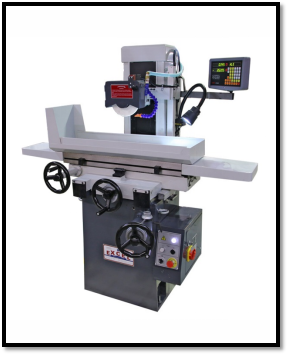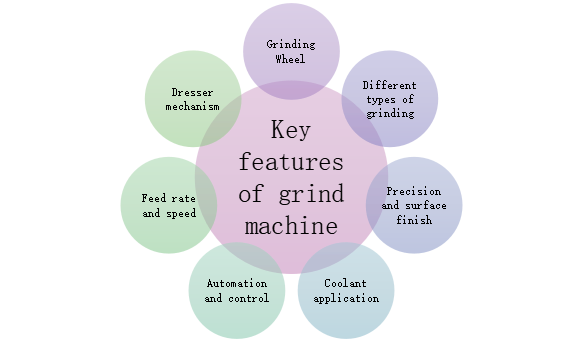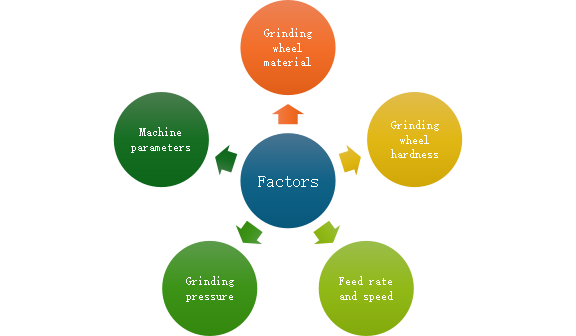Grind Machining: Definition, Process, Types and Specifications
 Nov 18,2024
Nov 18,2024

Grinding machines are used for making clean cuts and to achieve fine surface finish on metals. These machines are used in manufacturing industries commonly especially automotive and aerospace where the surface finish is very important. If you are searching the article related to the grinding machines, you are at the right place because in this article process, types and specifications of a grinding machine are discussed.

Fig 1: Grind machine
What is Grind Machining?
Grinding machine is a tool which is used to remove excessive material from the surface and provides the smooth finish to metal. This process starts with an abrasive wheel that is used to cut your workpiece when are in contact. Moreover, you can get lights and any desired shape as your application demands.
Key Features of Grind Machining
Grinding machine comes with many useful features but the most important are discussed here:
- Grinding Wheel
- Dresser mechanism
- Feed rate and speed
- Automation and control
- Coolant application
- Precision and surface finish
- Different types of grinding

Fig 2: Key features
How Does Grinding Work?
The following guidance will let you know the working principle for this process:
Basic Grinding Principles
These principles are based on several steps that are mentioned below:
- Grinding wheels are different for different materials that’s why first you need to select appropriate wheel. Then adjust the feed and speed rate and mount your workpiece.
- During working, keep using a coolant to control the heat and maintain the structural integrity.
Key Factors Affecting the Grinding Process
The following charts presenting those factors which can affect your grinding process. Therefore, it is necessary to be alert for effective operations:
- Grinding Wheel
- Dresser mechanism
- Feed rate and speed
- Automation and control
- Coolant application
- Precision and surface finish
- Different types of grinding

Fig 3: Factors
Common Grinding Machines Used
These are the grinding machines which are commonly used in different industries. These are few of them:
- Belt grinder
- Bench grinder
- Cylindrical grinder
- Surface grinder
- Flexible grinder
- Jig grinder
- Pedestal grinder
Advantages and Disadvantages of Grinding
This section addresses the significant advantages and disadvantages of using grinding machines.
Benefits of Grinding in Precision Manufacturing
- It will give your workpiece high-quality precision as well as dimensional accuracy.
- It provides a smooth surface finish.
- Parameters of the machine are adjustable according to your needs.
- Complex shapes can be produced through grinding.
Drawbacks and Limitations of Grinding
- High cost
- Thermal issues
- Excessive noise
When to Choose Grinding vs. Other Machining Processes
It all depends on the type of the material and the application. But the general criteria are if the material removal rate (MRR) is low, this machine is more favorable. If the workpiece is small and requires a smooth and precise surface finish, use a grinding machine over other machines.
Grinding Uses
Major grinding uses are mentioned below:
- It is used to make small clean cuts in complex workpieces.
- Grinding machines are significant in the aerospace and medical equipment industries.
- This machine is used to make prototypes as well as small products.
Types of Grind Machining Processes
In the following section, the major types of processes performed by grinding machines are discussed:
Surface Grinding
In this function, the abrasive wheel remains in contact to the workpiece. The running speed usually lies between 28-33 m/s and MRR is 1 in³/s are the important technical features of this type.
Cylindrical Grinding
Cylindrical parts which require tight tolerance are machined in cylindrical grinding. In this type of grinding, running speed is 25 to 33m/s and MRR is 1 in³/s.
Centerless Grinding
In this machine, the work blade performs only one function is to support the workpiece while grinding. It is usually used for cylindrical parts due to its centerless geometry. It has 23-30 m/s speed while keeping the 1 in³/s. MMR value.
Internal Grinding
As the name suggests it is used for internal parts of the components and samples can be grinded by its utility. Some common examples include internal bores and tubes. This machine provides a running speed between 33 to 48 m/s and an MRR of 0.5-1 in³/s.
Creep-feed Grinding
This grinding machine provides help in making complex in minimum time. It’s this property make it useful for aerospace industry i.e. high strength alloys. It provides the typical running speed is 0.10 m/s.
Profile Grinding
If you need high precision, use profile grinding machine, it is said by several operators. This machine provides 20-25m/s running speed and MRR of 1 in³ for every interval of 30s.
666
What Materials Can Be Used in the Grinding Process?
Grinding machines can be used for many materials but materials include steel alloys, Aluminum and Al alloys, Titanium etc. The ceramic materials are difficult to machine with grinding process but ultimately it depends on the application.
Grinding Technical
Some important griding technical details you should know are given below:
Grinding Wheel Specifications
The table below gives you a brief technical specification required for the grinding wheel:
Table 1: Specifications
|
Specs |
Details |
|
Grit size |
Coarse grit Fine grit |
|
Wheel grade |
Soft grade, Hard grade |
|
Bond type |
Vitrified Resin Metal |
|
Dimensions |
Diameter Thickness Bore size |
|
Maximum operating speed |
RPM |
Abrasive Materials in Grinding Wheels
Following are the grinding materials you will see mostly in grinding wheels:
- Aluminum oxide
- Silicon carbide
- Diamond
- Cubic boron nitride
- White aluminum oxide
Speed, Feed, and Depth of Cut in Grinding
Speed:Speed means the speed of wheel’s rotation. It is calculated in RPM (Rotation per minute).
Feed Rate: It means the rate of the movement of the grinding wheel into the workpiece and is measured in mm/min as well as ipm.
Depth of cut:
Key Considerations for Grinding Tool Steels
If you are working with grinding tool steels, you must do those things that can create serious issues for you. These things include:
- Right grinding wheel according to the workpiece materials.
- Selecting the right coolant to control the heat produced by cutting.
- Use appropriate average grain size.
- Use optimum parameters i.e. speed and feed rate
What's the Difference Between Milling and Grinding?
The milling process is used for single or multiple cutting tools. The MRR is higher in this operation, but the surface finish is lower.
If we talk about grinding process, only single wheel is used for functioning. The material removal rate is although lower than milling but the surface finish is greater than milling process.
 Tel/WeChat:
Tel/WeChat:  Email:
Email: 
 Home
Home
 What is a Machining Center? 2025 Complete Guide
What is a Machining Center? 2025 Complete Guide 







